Schmid & Partner Engineering AG (SPEAG) had developped the Dosimetric Assessment SYstem DASY in 1994. DASY has been improved continuously and all international standards were implemented. This made it the global market leader for SAR measurements (Specific Absorption Rate).
In 2000 SPEAG introduced SEMCAD, a Simulation platform for Electro-Magnetic Compatibility, Antenna design and Dosimetry. SPEAG is the only one offering test equipment and simulation tools for SAR. The common user interface simplifies the usage and reduces the time to become productive.
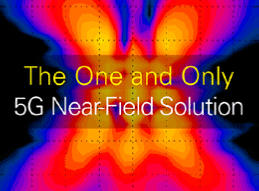 For
5G mobile communications up to 110 GHz SPEAG has developped new sensors and
modules for DASY6 and ICEy and software modules for SEMCAD X.
For
5G mobile communications up to 110 GHz SPEAG has developped new sensors and
modules for DASY6 and ICEy and software modules for SEMCAD X. Product overview SAR test equipment and EM simulator for 5G
Application note 5G SAR Compliance Testing with DASY6
DASY8, the advanced SAR test system
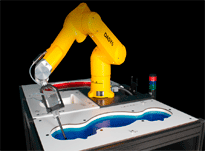 DASY8 is the gold standard for SAR testing.
DASY6 is a flexible, high-precision near-field scanner equipped with advanced software for performing any near-field scan in arbitrary volumes in free-space or any dielectric media.
DASY6 is compatible with all national and international standards such as IEC 62209-1, IEC 62209-2 and IEEE 1528. Specific absorption rates can be measured from a few kHz up to 110 GHz.
Features:
DASY8 is the gold standard for SAR testing.
DASY6 is a flexible, high-precision near-field scanner equipped with advanced software for performing any near-field scan in arbitrary volumes in free-space or any dielectric media.
DASY6 is compatible with all national and international standards such as IEC 62209-1, IEC 62209-2 and IEEE 1528. Specific absorption rates can be measured from a few kHz up to 110 GHz.
Features:
- measuring specific absorption rates (SAR)
- test of Hearing Aid Compatibility
- control of base station simulators
- automatic generation of reports
- compatibility with all tissue simulating liquids
- 9 different standard phantomss available
- customer specific phantoms can be integrated
New: DASY8 module mmWave for power density compliance tests in 2 mm distance, for frequencies up to 110 GHz. It is compatible with international standards such as IEC TC106 AHG10 and FCC. The software options FTE (Forward Transformation Evaluation) and MEO (Maximum Exposure Optimizer) reduce test times substantially.
cSAR3D, the Vector Array System for fast SAR Tests
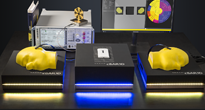 cSAR3D
uses a special vector arry of many E-field sensors within head or body emulating phantoms. The dedicated software calculates 3D pictures of the specific absorption rate within less than 1 second.
cSAR3D measures according to the standards IEC 62209-2 and IEC 62209-3. Features:
cSAR3D
uses a special vector arry of many E-field sensors within head or body emulating phantoms. The dedicated software calculates 3D pictures of the specific absorption rate within less than 1 second.
cSAR3D measures according to the standards IEC 62209-2 and IEC 62209-3. Features:
- three dimensional visualisation of specific absorption rate
- visualisation of SAR peak values
- control of base station simulators
- automatic generation of reports
This Video shows the many features of cSAR3D.
DASY8-3D, the Integration of DASY8 and cSAR3D
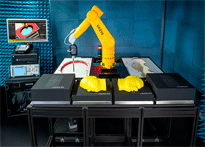 DASY8-3D
is the fastest system for SAR measurements according to all international standards in the frequency range 300 MHz to 6 GHz.
It uses the DASY6 robot for precise and fast positioning of the DUT (e.g. mobile phone or tablet PC) on the phantoms of cSAR3D.
The software enables automated and manual measurements and controls the base station simulators of Rohde & Schwarz, Anritsu or Keysight.
DASY8-3D
is the fastest system for SAR measurements according to all international standards in the frequency range 300 MHz to 6 GHz.
It uses the DASY6 robot for precise and fast positioning of the DUT (e.g. mobile phone or tablet PC) on the phantoms of cSAR3D.
The software enables automated and manual measurements and controls the base station simulators of Rohde & Schwarz, Anritsu or Keysight. EASY6 Test System for SAR and Field Strength
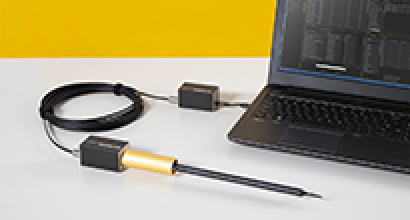 EASY6
is the Exposure Acquisition SYstem from SPEAG. Optical links connect sensors for E-field (up to 6 GHz), H-field (up to 3 GHz), specific absorption rate (up to 6 GHz) and temperature with a PC.
EASY6
is the Exposure Acquisition SYstem from SPEAG. Optical links connect sensors for E-field (up to 6 GHz), H-field (up to 3 GHz), specific absorption rate (up to 6 GHz) and temperature with a PC.ICEy EMI (Interference) and EMC Test System
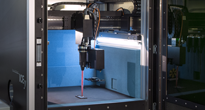 ICEy is
the most advanced near field scanning system for testing electromagnetic interference (EMI) and compatibility (EMC).
It features micrometer resolution via minimum distance of only 2 mm of the sensors from the DUT.
ICEy is
the most advanced near field scanning system for testing electromagnetic interference (EMI) and compatibility (EMC).
It features micrometer resolution via minimum distance of only 2 mm of the sensors from the DUT.The new E-field sensor EUmmWV2 is part of the ICEy mm-wave module. It allows testing up to 110 GHz. ICEy consists of:
- a 4 axis positioning system
- an absorber chamber which eliminates environmental disturbances
- a high resolution stereo camera system to capture the DUT
- optimized sensors for each frequency range
- a high performance PC for control and evaluation of the measurements
- and the ICEy software for control, evaluation and visualisation
SEMCAD X, the FDTD Simulation Tool
 Advanced Finite Difference Time Domain algorithms make SEMCAD X Matterhorn the State-of-the-Art 3D simulator for electromagnetic problems.
It is the perfect simulation tool for:
Advanced Finite Difference Time Domain algorithms make SEMCAD X Matterhorn the State-of-the-Art 3D simulator for electromagnetic problems.
It is the perfect simulation tool for:
- simulating specific absorption rates (SAR)
- analysis of compatibility with hearing aids
- simulating wireless charging
- analysis of electromagnetic interference (EMI)
- analysis of electromagnetic compatibility (EMC)
- simulating wearable wireless technologies
- simulating antennas
- simulating linear and nonlinear optical components
This Video shows Semcad X Matterhorn in action.
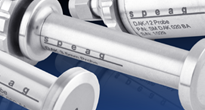 DAK Dielectric Assessment Kits
DAK Dielectric Assessment Kits
DAK products measure the dielectric parameters permittivity, permeability, conductance and loss factor at RF and microwave frequencies in liquids and powders. Product overview DAK
- DAK-12 for frequencies from 4 MHz to 3 GHz
- DAK-3.5 for frequencies from 200 MHz to 20 GHz
- DAK-1.2 for frequencies from 5 GHz to 50 GHz
- DAK-1.2E for frequencies from 5 GHz to 67 GHz
DAKS dielectric Sensors with Reflectometer
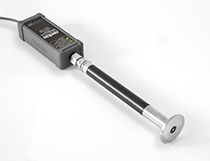 DAKS
dielectric measurement
systems integrate a miniaturized vector reflectometer which eliminates phase errors which occur in cables when they are moved.
DAKS
dielectric measurement
systems integrate a miniaturized vector reflectometer which eliminates phase errors which occur in cables when they are moved.
- DAKS-12 for frequencies from 4 MHz to 3 GHz
- DAKS-3.5 for frequencies from 200 MHz to 14 GHz
DAK-TL-2 Systems for Measuring dielectric Parameters of thin Layers
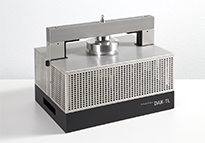 DAK-TL-2
(Dielectric Assessment Kit for Thin Layer Properties) systems have been developped for the precise characterisation of thin solid sheets (thickness between 100 µm and 10 mm) and small amounts of liquids.
DAK-TL-2
(Dielectric Assessment Kit for Thin Layer Properties) systems have been developped for the precise characterisation of thin solid sheets (thickness between 100 µm and 10 mm) and small amounts of liquids.
- DAK12-TL-2: 4 MHz to 3 GHz
- DAK3.5-TL-2: 200 MHz to 20 GHz
- DAK1.2E-TL-2: 5 GHz to 67 GHz
This Video shows important features of DAK-TL-2.
TDS E-Field and H-Field Sensors with RF over Fiber
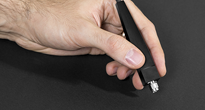 To measure electric and magnetic fields in the near field without introducing disturbances SPEAG developped the
TDS product family.
The probe tip contains an ASIC with the field sensor and and electro-optical converter for signal conditioning and energy conversion. Both RF signals and power supply use an optical fibre.
The electromagnetic field is not being disturbed by metal wires.
To measure electric and magnetic fields in the near field without introducing disturbances SPEAG developped the
TDS product family.
The probe tip contains an ASIC with the field sensor and and electro-optical converter for signal conditioning and energy conversion. Both RF signals and power supply use an optical fibre.
The electromagnetic field is not being disturbed by metal wires.
- E-field sensors 10 MHz to 6 GHz, 120 dB dynamic range (0.3 mV/m - 300 V/m)
- H-field sensors 10 MHz to 6 GHz, 1 µA/m – 1 A/m
- RF over fibre sensor for electrical signals from 100 kHz to 10 GHz
OH4VNA - Optical Head for VNA
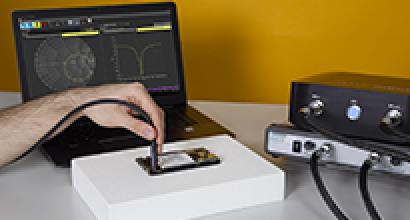 OH4VNA
is a bi-directional radiofrequency (RF-) over-fiber link that offers the most reliable means to measure the S11 of electrically small antennas in the 500 MHz – 6 GHz frequency range.
Power is supplied from the TDS base unit via an optical fibre, therefore no metallic wire disturbs the field.
OH4VNA
is a bi-directional radiofrequency (RF-) over-fiber link that offers the most reliable means to measure the S11 of electrically small antennas in the 500 MHz – 6 GHz frequency range.
Power is supplied from the TDS base unit via an optical fibre, therefore no metallic wire disturbs the field.
Phantoms for electromagnetic Measurements
 EM-phantoms emulate electromagnetic properties of the human body. SPEAG offers full body phantoms and phantoms for important body parts (head, hands, ears) for 5G and other microwave applications up to 110 GHz.
EM-phantoms emulate electromagnetic properties of the human body. SPEAG offers full body phantoms and phantoms for important body parts (head, hands, ears) for 5G and other microwave applications up to 110 GHz.
MAGPy Measurement System for strong magnetic Fields and Gradients
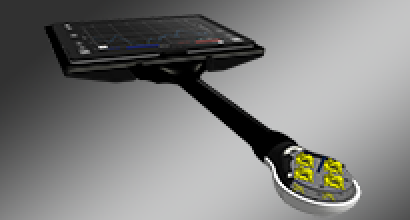 MAGPy
from SPEAG is the only test equipment which can measure and visualize strong magnetic gradients. It is ideal for the evaluation of wireless chargin equipment and for compliance tests.
SPEAG is directly involved with the standardisation process for the measurement of gradient fields. MAGPy will be compatible with the future standard IEC 63184. Features:
MAGPy
from SPEAG is the only test equipment which can measure and visualize strong magnetic gradients. It is ideal for the evaluation of wireless chargin equipment and for compliance tests.
SPEAG is directly involved with the standardisation process for the measurement of gradient fields. MAGPy will be compatible with the future standard IEC 63184. Features:
- measures H-field vector with 8 sensors (three orthogonal coils each)
- measures E-field vector
- measures amplitude and field gradients with high precision
- wide measurement range from 1% to 500% of regulatory limitd
- up to 20 dB less conservative measurement than with isotrope sensors




